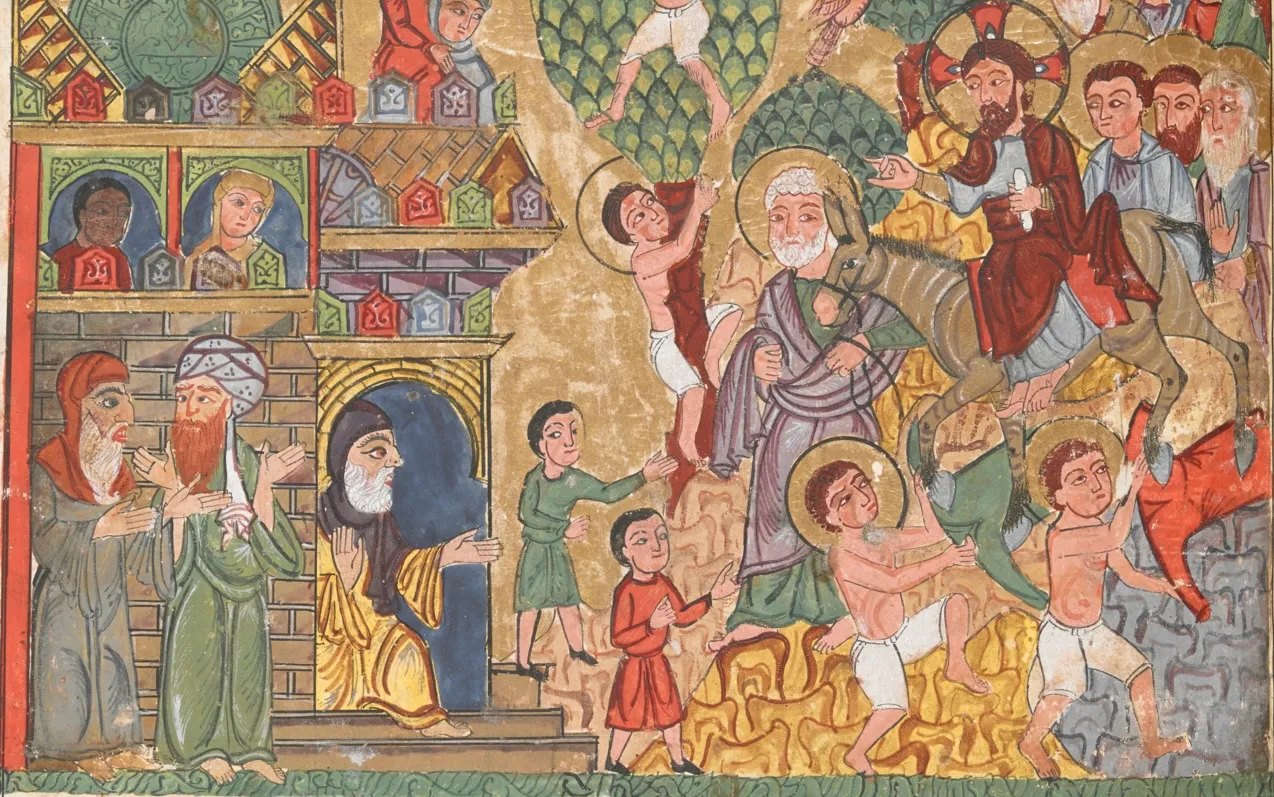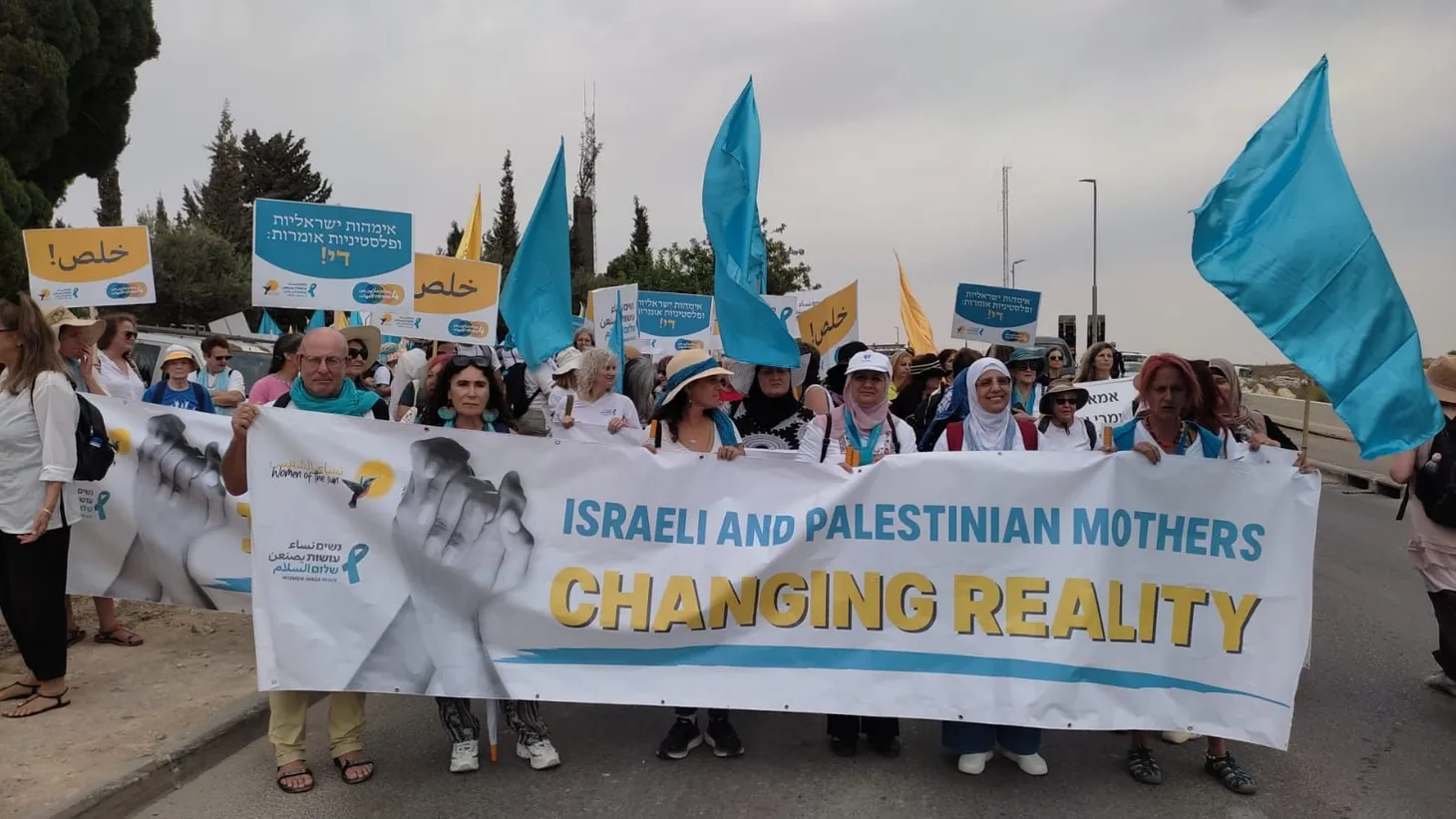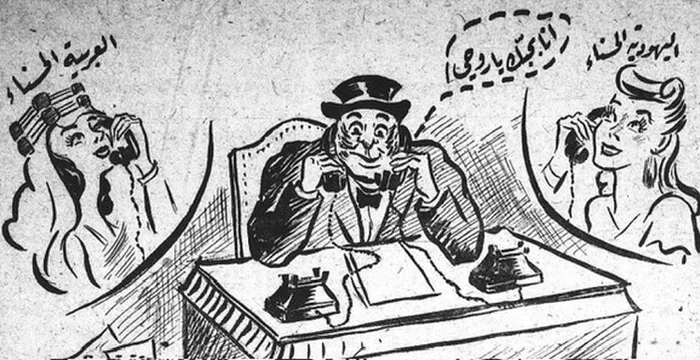Explanations, Conjunctures, and Teaching about the Islamic State
Table of Contents
“Explanations exist; they have existed for all time; there is always a well-known solution to every human problem — neat, plausible, and wrong.” — H.L. Mencken in “The Divine Afflatus” in New York Evening Mail (16 November 1917)
Recently it’s been almost impossible to look at a newspaper, watch a cable news show, or look at a news website and not find a story about ISIS (or the Islamic State) and why its adherents are attacking the West. I first noticed this trend right after the attacks in Paris on 13 November 2015, which is not exactly surprising. At the same time, I’ve been surprised (and a bit frustrated) by how frequently these articles and stories reduce the phenomenon of the Islamic State and the “logic” for its horrifying practices to a single explanation. Monocausal explanations are frequently found in popular media, which are trying to simplify the story for a larger audience. The ever entertaining Karl Remarks on Twitter poked fun at this tendency to simplify the Islamic State to a single sentence explanation.
You want the simple one-sentence explanation for what caused ISIS? pic.twitter.com/S7u9iOXdPH
— Karl Sharro (@KarlreMarks) December 1, 2015
The problem is that these simple explanations, with the notable exception of Karl Remarks’, are rarely adequate for fully understanding the reasons for why events happened, and they may even be misleading. In the classroom, we want to strive for more complexity and nuance.
Before we can even begin to think about how we might teach about the Islamic State, there’s the basic question of what to call it! Do we opt for the Islamic State or ISIS (the Islamic State in Iraq and Syria) or ISIL (the Islamic State in the Levant) or Daesh (the Arabic acronym for the group’s full name)? There are reasons for using each name. The names we choose to use are loaded with meaning about how we think about the organization. Regardless of what we choose to call the Islamic State, we need to focus even more on understanding why it developed in the first place.
Instead of relying on the monocausal, or single sentence, explanation, we need to embrace a conjunctural or polycausal explanation of the Islamic State. Historical events, like almost everything in our lives, never occur because of a single reason. There are always multiple reasons for why things happen in the world. Human actions cannot be easily explained like mathematical equations. In trying to present a more comprehensive, conjunctural explanation for the Islamic State, I want to look at some examples of monocausal explanations.
Some of the earliest discussions of the Islamic State focused on the Islam part. In a frequently cited article “What ISIS Really Wants” in The Atlantic, Graeme Wood explains ISIS almost solely on the basis of its understanding and interpretation of Islam:
It is a religious group with carefully considered beliefs, among them that it is a key agent of the coming apocalypse.
His singular focus on the role of Islam in analyzing the Islamic State and how it chooses to justify its actions almost makes sense given its name. It is the Islamic State, after all. A similar approach was often used in the wake of 9/11 to understand al-Qaeda. In both a journal article and subsequent book called “Good Muslim, Bad Muslim,” the Columbia University political scientist Mahmood Mamdani has discussed the tendency to oversimplify and distort these complex issues with “culture talk.” By focusing exclusively on the Islamic nature of the Islamic State, Wood presents a nice, simple explanation related to the cultural background of the organization. This explanation, while neatly packaged, also obscures the complex political and economic historical context of the actions of the Islamic State. The other significant problem with Wood’s approach is the question of the validity of his arguments. He basically accepts the claims of the Islamic State that its beliefs and practices are actually Islamic. In a response to the Wood article “What Is “Islamic”? A Muslim Response To Isis And The Atlantic”, Daniel Haqiqatjou and Yasir Qadhi argue that Wood mistakenly accepts the Islamic State’s beliefs and practices as truly Islamic. This presentation also contributes to a context in mainstream American society in which blaming all Muslims becomes easier.
Getting beyond the tendency to fall back on cultural talk, we need to explore the economic and political historical context for the development of the Islamic State. The only problem is that it should be the contexts, rather than the context. Multiple factors matter.
One popular explanation is to reduce the development of the Islamic State (and many other problems in the Middle East) to the legacy of Sykes-Picot. For those not familiar with early twentieth century European diplomatic arrangements, the Sykes-Picot Agreement was a 1916 secret agreement between the British and French, with Russian knowledge, made during World War I about how to partition Ottoman territories. After the war ended, the Ottoman Empire was broken up in ways that reflect some aspects of the Sykes-Picot Agreement. This argument has been picked up by a wide range of commentators. In a post on his own blog, Richard Falk, a former Princeton professor, presents the actions of the Islamic State as a backlash to the Sykes-Picot Agreement. Michael Williams, a former British and United Nations diplomat, also blames the Sykes-Picot Agreement for creating the ethnic and sectarian divisions in the region that have given rise to the Islamic State. While there is a certain pleasure in blaming all the problems of the Middle East on a couple of scheming European diplomats a century ago, it’s not a complete explanation. James Gelvin, professor of History at UCLA, points out that despite Glenn Beck, Noam Chomsky, Bashar al-Assad, and the Islamic State all pointing the finger at the Sykes-Picot Agreement, there have simply been too many other factors since 1916. He attributed the widespread popularity of this explanation to the fact that:
it assigns culpability to individuals rather than complicated historical events or faceless apparatchiks meeting behind closed doors. For Middle Easterners, “Sykes-Picot” became code long ago for imperialist arrogance and the illegitimacy of the contemporary state system, whatever the agreement’s actual historical significance.
If we can’t blame scheming European diplomats, it seems that the next most preferred target is Saudi Arabia. Since the late eighteenth century, the Saud family has cooperated with imams that have supported the Wahhabi interpretation of Islam, an ultraconservative interpretation of Islam based on the teachings of Muhammad ibn Abd-al- (1703–1792). In exchange for backing the Saud’s family rule over much of the Arabian Peninsula, the Saudi government has supported Wahhabi imams and promoted Wahhabi interpretations of Islam around the world. According to Alastair Crooke, the failure to maintain the expansionary and jihadist thrust of Wahhabism, while still globally promoting the message of Wahhabism, opened the door for the Islamic State. The Islamic State sees itself as completing a mission to spread true Islam that had begun in the eighteenth century. Karen Armstrong also blames the Saudis for facilitating the development of the Islamic State. Like Crooke, she argues that the Islamic State sees itself as fulfilling the mission first set out for the Wahhabis, but she also argues that Saudi Arabia also brought about the cultural conditions that have shaped the Islamic State:
A whole generation of Muslims, therefore, has grown up with a maverick form of Islam that has given them a negative view of other faiths and an intolerantly sectarian understanding of their own. While not extremist per se, this is an outlook in which radicalism can develop.
Despite the role of Saudi Arabia, other scholars and journalists have looked elsewhere in the Middle East to identify the historical context for the development of the Islamic State. The authoritarian states which have dominated the Middle East since the end of World War II have also been seen as the source of the Islamic State. After the British and the French relinquished control of their mandates and protectorates (which was simply a nice way of saying colonies) in the Middle East and North Africa in the late 1940s to 1960s, indigenous Arab rulers took control of states across the region. These rulers were frequently secular, military elites who styled themselves as presidents of republics, but were essentially dictators. In an article in al-Monitor, Professor Madawi al-Rasheed, a specialist in Saudi Arabian history, acknowledges the influence of Islam and the policies of Saudi Arabia, but relegates them to a minor role compared to the policies of authoritarian states and their collapse since the beginning of the Arab Uprisings in late 2010:
It is simplistic to consider this recent wave of terrorism merely a reflection of indoctrination that glorifies violence in the name of Islam or a direct endorsement of bigoted preachers of hate, most of whom are affiliated in one way or another to the Wahhabi-Salafi religious discourse dominant in Saudi Arabia. The main reason for the violence is the progressive collapse of the old Arab authoritarian political order, in which dictators ruled with an iron fist. The order began to crumble with the 2010–2011 Arab uprisings. It was naive to think that the moment these dictators were deposed, a new era of democratic transitions would prevail across the region. Those dictators had already suffocated civil society and eliminated any force that might have endorsed democracy. They encouraged a nasty alternative of regulating and controlling people’s social and religious behavior.
Thanassis Cambanis, in an article that originally appeared in the Boston Globe also blames the authoritarian states for the development of the Islamic State:
An entire rotten cast of Middle East governments has spawned a lost era through misrule and repression. Rotten rulers are the root cause not just of the Islamic State but of hundreds of thousands of other deaths. A partial list of villains includes theocracies like Saudi Arabia and Iran, and secular nationalist states like Egypt and Syria.
While a number of individuals have pointed to policies and cultural traditions within the Middle East to explain the rise of the Islamic State, there is another group of scholars and journalists who look outside the Middle East, primarily to the policies of the French and American governments. During the nineteenth century France began colonizing Algeria, and expanded its imperial control into other parts of North Africa and the Middle East during the early twentieth century. Even after France withdrew from these colonies after World War II, the French have maintained close relations with their former colonies. Another approach to understanding the Islamic State is to highlight these policies, along with the French view of their nation as a bastion of secularism and republicanism, as the reasons for why the Islamic State attacked Paris in November. Ian Coller, a professor of History at University of California, Irvine, points to both the colonial legacy of France and France’s continued marginalization of Muslims living within France as the key reasons for the Islamic State’s attacks. He claims that while the French ruled over Muslims in multiple colonies for over a century, they never incorporated them into the French nation in the way that other religious groups were:
For 130 years, France carved out an empire in the Muslim world. France’s India, Canada, Australia were Morocco, Syria, Lebanon. Yet Islam was never recognized as a French religion in the way that Catholicism, Protestantism and Judaism were.
Even after relinquishing control of their Muslim colonies, the French continued their policies of marginalizing Muslims as they migrated into and settled in France since the 1960s:
In Paris, above all, the bulk of the second and third generations of Muslims remain in a kind of colonial shanty-town on the outskirts of the wealthy, vibrant city where I was lucky enough to rent an apartment. This is the Arab Paris of today, a Paris that most tourists never see. It is a place of vibrant markets, hardworking families and close-knit neighbourhoods. It is also a place that breeds unemployment, crime, despair and radicalization.
Frank Gertis, in a post on Africa is a Country, pursues an argument similar to Coller. While acknowledging the specific colonial actions of the French or continued marginalization of Muslims within France, he focuses more on how the evolving French conception of themselves as a nation has left little room for competing interpretations of identity, especially the Islamic identity encouraged by the Islamic State:
At the same time, however, we should not dismiss the feelings of Frenchmen and Europeans who see the values of democracy and the open society violently attacked by men who feel excluded from those societies. Most observer points out with great subtlety that Daesh perverts the values of Islam as it is being practiced today. At the same time there is little attention for the recent history of French Republicanism and the values that have sustained the European integration process.
Another approach to understanding the Islamic State is to highlight the policies of the United States in the region. Since the 1991 Gulf War, the United States has maintained a regular military presence in the region. With the 2003 invasion of Iraq, the United States overthrew the Baathist government of Saddam Hussein and began remaking the entire Iraqi state. According to Time’s Mark Thompson, it was the American policy of dismantling the existing Iraqi army that benefited the Islamic State. He argues that:
History shows that the U.S., beyond providing ISIS with war machines, also made a fateful decision that gave ISIS some of its best commanders and fighters.
A different way of looking at American policy is advocated by Toby Mathisen, a research fellow at Oxford. He points to decisions made by the American government during the 1980s to work closely with the Saudi government to fight the Soviet Union during the final decade of the Cold War. While acknowledging the influence of Saudi policies, Mathisen also makes clear that it was the involvement of the United States, and specifically its decision to work with the Saudis, that led to the development of the Islamic State:
The spread of extremist Islamist ideology is then as much a result of Western foreign policy as of Saudi machinations.
Mathisen’s argument is a good place to bring this survey of articles about the Islamic State to a close. Instead of focusing on a single issue in explaining the rise of the Islamic State and its decision to attack France in November, he links two governments’ policies: the United States and Saudi Arabia. If we want to understand fully the reasons for the development of the Islamic State, we need to broaden our horizons even further. With the possible exception of Graeme Wood’s argument about Islam and the Islamic State, these arguments all highlight an important cause of the Islamic State. The key is to recognize that we need to encourage students to integrate all these various singular explanations into a broader polycausal or conjunctural explanation. It may not be a pretty or “neat” explanation (according to Mencken), but at least it won’t be wrong. In this way, we not only help students have a more sophisticated and nuanced understanding of the Islamic State, but we also give them the analytical tools needed to make sense of a complex and integrated world.
Liberating Narratives Newsletter
Join the newsletter to receive the latest updates in your inbox.



